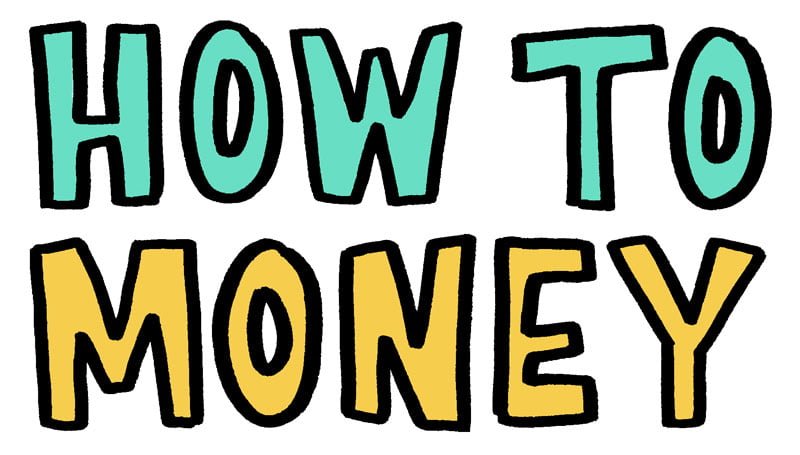Setting your kids up for financial success is a rewarding endeavor. There’s no doubt that teaching your kids about money can help to ensure a brighter financial future for your mini-me. But what about setting them up with other financial tools? Should you buy life insurance for your kids?
The short answer is: Buying life insurance for your kids isn’t a great decision. There are far better avenues to giving your kids a financial head start in life and insuring against financial disasters.
Instead of paying policy premiums over the decades, it’s almost always a better idea to invest that money elsewhere.
What is children’s life insurance?
Life insurance for kids is a form of life insurance policy that a parent or grandparent can take out on their child. Typically, the parent or policyholder is also the beneficiary. So if the that child were to pass away (a horrific thought), the beneficiary would receive a payout, or “death benefit”.
The death benefit can be used at the beneficiary’s discretion. But, most often policies are designed to cover end-of-life expenses, like burial and funeral costs.
Because no one depends on the insured child for income, the death benefits are usually quite small compared to adult policies. They are also relatively cheap, with $50,000 worth of coverage costing around $27 per month for a child under 1 year old.
When the child becomes an adult, you can often transfer the policy to them and they can take over the premiums. In many cases, they will have the option to add additional coverage.
Overview of Types of Life Insurance for Children
There are three different ways you can go about getting life insurance coverage for your child.
- Term Life Insurance: Term life insurance lasts for a predetermined amount of time (like 20 years). The policy only pays a death benefit if the insured were to pass away during that specific window of time.
- Whole Life Insurance: Whole life policies are a type of permanent life insurance that will last throughout your child’s entire life (as long as the premiums are paid). Most children’s life insurance policies are whole life insurance.
- Add them as a Rider: If you have life insurance, you may have the option to add your child as a rider to your policy. However, they will no longer be covered if you die.
Pros of life insurance for children:
While many families probably don’t need it, here are a few benefits that insurance representatives will sell you on…
1. End of life expenses are covered
While losing a child is hard to even think about, if you had a child pass away, your child’s life insurance policy would be helpful, covering end-of-life expenses like burial and funeral costs. If the death benefit is large enough, you may even be able to take time off from work to grieve.
2. Ensure your child will always have access to life insurance
Certain health conditions or more dangerous hobbies/careers can make it difficult for some adults to get life insurance coverage. If your child develops a health condition that will follow them into adulthood, or if you have a family history of certain health conditions that your child is likely to develop, it may make sense to get life insurance for your child.
Many life insurance policies include a guaranteed insurability rider, which will guarantee that they can purchase some additional coverage when they become an adult. This will ensure that they will at least have access to some coverage throughout adulthood.
3. Low Premiums
When it comes to buying life insurance, the younger you are, the cheaper the premiums will be. Luckily, we live in a world with low rates of childhood mortality, meaning that insurance rates for children’s life insurance are typically very low. This can allow your child to hold onto lower rates into adulthood compared with opening their own policy later in life.
4. “Cash Value”
Specifically for whole life policies, when you pay your premiums, a portion will go towards building a cash value. This is like a fancy savings account that earns interest. Your child can eventually borrow against or withdraw that cash value. However these interest rates are usually quite small, and you can likely earn more interest in other ways. More on this later…
5. Easy to open
Life insurance policies are often very simple and easy to take out for children. Whereas with most adult policies you’ll need to do a medical examination, children’s life insurance does not usually require this. Instead, you’ll simply answer some application questions about the child’s health and your family medical history.
Cons of life insurance for children:
However, purchasing life insurance for your kids can come with some significant downsides. Here are a few negatives that the insurance salesman won’t dwell on…
1. Low rate of return
This negative is actually a positive in disguise. Because the odds of your child passing away are so low, there’s a tiny chance you’ll ever need this type of insurance. You’re (thankfully) not very likely to receive the death benefit for your policy. This means that most people could use their money, what they would have paid in premiums, more efficiently.
2. Low Payouts
Again, because children do not have any dependents, the payouts for their life insurance are relatively small. For example, many adults buy coverage for between $250,000 to $1,000,000. Children’s life insurance may only offer a death benefit of around $50,000.
3. Grow more wealth elsewhere
If you’re most tempted by the idea of a growing “cash value”, you may want to reconsider. Insurance and “investment products” don’t mix well. That’s because of the high fees, low performance, and horrible flexibility of these policies.
Instead, you will almost certainly create a larger nest egg for your child by investing in a 529 plan. These accounts can be used to pay for education expenses, and can be rolled into a Roth IRA should your child decide not to pursue higher education.
There are a ton of other investment accounts for kids that will stretch your dollars much further.
For example, instead of purchasing a life insurance policy, put $27 each month into a custodial brokerage account. By buying index funds and earning an average 8% return, your child could have $12,576 by the time they reach the age of 18. That’s enough to cover 1-2 years of college tuition at many in-state colleges!
4. Could cause other financial strain
When it comes to financial priorities, parents should secure and stabilize their own financial situation before focusing on their kids. It’s like on an airplane – putting on your oxygen mask first is advised before helping your kids with theirs. The same goes for investing, insurance, and healthcare. Spending money on this kind of insurance policy for a kid might mean not saving enough for a more important financial goal. You might need that money in retirement yourself!
5. Less money to spend on fun things
Even though life insurance for kids can be cheap, every dollar spent on a policy is one less dollar you can use to enhance their childhood. Like enrolling them in extracurriculars, taking them out for ice cream, or planning that family vacation that forms memories. Even a policy that costs just $27 per month adds up to $324 per year.
Setting your kids up for success is important. But in most cases, you don’t need to buy them a life insurance policy to do that.
Should You Buy Life Insurance For Your Kid?
The true purpose of purchasing life insurance is to replace lost income for those who depend on it. Because no one depends on your child for income, most families do not need to purchase life insurance for their kids.
That being said, if your child does have a health condition, or if you have a family history of health conditions that they are likely to develop, it could make some sense. If your child is healthy, we suggest skipping this altogether – put that money to better use!
If you’re worried about needing to pay for end-of-life expenses should the worst happen, we would suggest self-insuring by working towards building a solid emergency fund. Saving up 3-6 months’ worth of living expenses could help you to cover end-of-life expenses and also afford you some time away from work.
Alternatives to buying life insurance for your kids
When it comes to giving your kids a financial head start, it’s important to ensure you take care of your own finances first. Make sure you’re maxing out your retirement accounts, paying off debt, and fully funding your emergency fund. That will ensure they grow up in a stable financial environment. And as you grow older, your kids won’t need to financially support you.
However, if you have already reached these goals and would like to give your kid a financial head start, there are plenty of effective ways to do this. Here are just a few other ways you can invest for your child’s future.
529 Plans
A 529 college savings plan is an investment account that allows you to plan for future education expenses. You can invest within this account, and withdraw your funds tax free to pay for education-related costs like tuition, room and board, and books. And thanks to the Secure Act 2.0, this money won’t go to waste should your child decide that college isn’t for them. If they decide to enter the workforce instead, this money can be rolled into a Roth IRA.
Custodial Brokerage Account
These are just like regular brokerage accounts, except for kids. Since they aren’t legal age to make investments or trades, you (or any appointed adult) can act as a custodian and manage the account until they are 18.
Fidelity is a great place to open a custodial brokerage account. They have no monthly fees, no minimums, and allow purchasing of fractional shares and ETFs. This means you can invest as little as $50 if you want!
Custodial Roth IRA
For older kids who are earning income, you can open up a custodial Roth IRA for them. You can contribute to it every year that they have earned income up to the contribution limit, or the amount of money they earned that year (whichever is less). When they turn 18, they will have full control of the account, and a significant leg up on their peers when it comes to retirement investing!
The Bottom Line:
It’s a personal decision on whether or not to buy life insurance for your kids. Plus, it’s difficult to put a price tag on peace of mind. However, in most cases it probably doesn’t make sense. Self-insuring is a smarter and more calculated money move, and investing would-be policy premiums will grow more wealth in the long run for your kiddos.
529 accounts are a great way to ensure your kid has a financial head start. But the ultimate way to give your kids the best financial future → is to lead by example. Save and build wealth for your future. Your entire family will benefit.
Related Posts:




